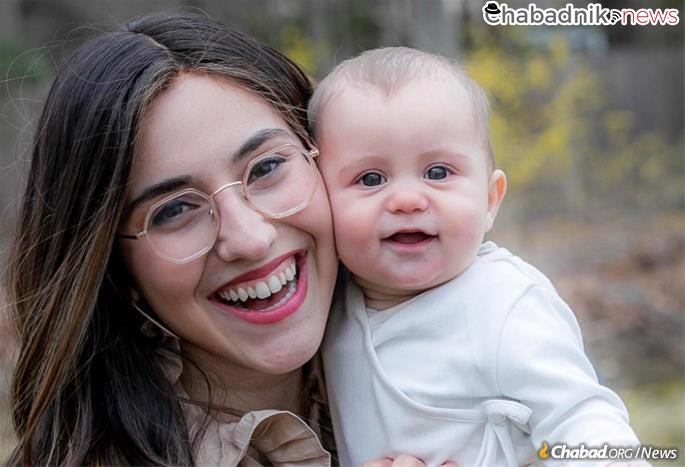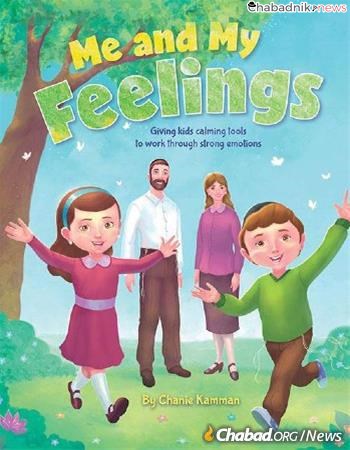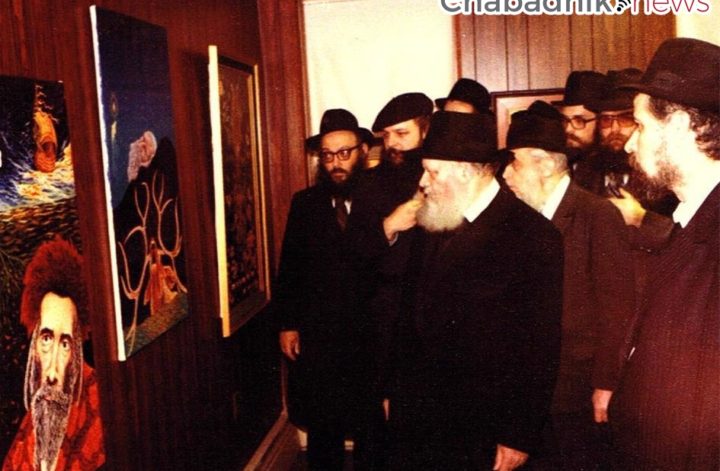Author Chanie Kamman talks about ‘Me and My Feelings’

Everyone has feelings. That much is obvious. Some feelings are bigger than others, at times storming our consciousness and clouding our vision. What’s less obvious to many adults is that children have those same feelings, and they, too, must be properly addressed. Many professionals call these “big feelings,” and there is an entire industry these days comprising books, seminars and other media to teach and coach parents and children alike through such experiences.
While there are many such products to do so, there seems to be a dearth of Jewish material along such lines. Recently, Chanie Kamman, a young mother of four, and program director of the Friendship Circle of Chabad of Fairfield County, Conn., authored “Me and My Feelings, Giving Kids Calming Tools to Work Through Emotions,” published by Judaica Press.
Kamman recently discussed her new book with Chabad.org.
Q: First of all, what inspired you to write this book? Is this a dream you’ve had for some time now?
A: It’s funny; I actually never dreamed that I would be an author, nor was it ever something on my bucket list per se. The entire project just grew out of my own personal experience with my children. They have strong emotional experiences like any other children, and I couldn’t find much good material out there with a Jewish perspective. So, I set out to do it on my own.
I started out by reading it to my children and emailing a PDF version to family and friends with toddler children. After getting enthusiastic responses and seeing the need for such a product, I dug in and decided that this is for real, and set out to pen something to share with the world.
Q: Can you tell me more about what “strong emotions” are, and how parents are supposed to respond? Do you sense a shift in attitude to such experience from years past?
A: Oh, there’s definitely a dramatic shift even from when I was a kid, and I think it’s really a universal phenomenon as we learn ever more about mental health and emotional well-being. Big emotions are those strong feelings that children feel—whether it’s anger, frustration, sadness and even happiness. For many adults, we are used to naming such emotions, and hopefully, we have some sort of coping mechanism for such overwhelming internal events. But children don’t have natural tools to work through their big emotions, especially if their feelings were never discussed or welcomed. The first step is to help children identify with and allow them to really feel their own feelings.After that, coping mechanisms can be introduced.
Q: What do you feel is the uniquely Jewish approach you advance in your book? I imagine that many theories and methods exist from highly trained and experienced professionals; so what does Judaism introduce to the conversation?
A: My own journey into this actually started not so much ideologically. When I was initially looking for good books for my own children, all the recommendations I received had non-kosher animals in them. As per the directive of the Rebbe [Rabbi Menachem M. Schneerson, of righteous memory] to be sensitive with the imagery we show our small children, I really wanted something without any such non-kosher animals in them.
Q: It’s funny how we sometimes arrive so randomly at things! But more seriously, I’m sure you’ve developed a uniquely Jewish approach in your book. What is that?

A: Of course, there is. First and foremost, introducing G‑d into the conversation is so helpful. Children are very much intuitively predisposed to the idea of a G‑d Who watches over them and loves them. In that light, it’s extremely comforting to tell children that G‑d understands everything they are feeling, and that it’s OK to cry, to be upset, to be frustrated—He gets it! Just as we want them to know that I, as their parent, welcome their emotions, it’s just as important to give that same “security” with G‑d. Thereafter, we tell them how important it is to always serve G‑d with joy, how happiness is the way to a more fulfilled life, and ultimately, the way G‑d wants us to live. While it may sound lofty to some, I have found that children are surprisingly quick to take to such language.
Q: I sense a certain legitimization of negative feelings. Like, “Hey, it’s OK to feel whichever way you want, just embrace it.” Are you concerned that such an approach sends the wrong message, perhaps condoning negativity?
A: Not at all! I’ve heard such chatter before, and it really stems from a misunderstanding of the approach advanced in the book and elsewhere. Of course, as parents, teachers and mentors, we don’t want to teach our kids that it’s OK to act on all feelings. I look at it this way: All feelings are OK; all behaviors are not. After all, if a child is experiencing a strong sense of anger or really wants to get back at someone, for example, we can’t simply ignore it and wish it will go away on its own. It won’t.
By acknowledging that whatever they’re feeling is important both to themselves and to us, we’re positioning both parties in a place to then go ahead and explore it. That’s the real key: to identify the big emotion and then proactively heal it from a healthy place.
Q: I almost forgot to ask you: What age children is the book intended for?
A: I would say 3- to 6 year-olds. Really, really young. They have the same strong emotions as us, just in a smaller body!
I understand you work with children with special needs in your capacity as program director for the Friendship Circle in your community. Has any of your experience there impacted this project?
A: Definitely. First of all, just the sheer diversity of experience obviously exposes me to many different types of children with a plethora of different emotional reactions. But more specifically, I have found that the children I work with are oftentimes extremely expressive with their emotions—very raw, if you will. Some conventional responses used for typical children don’t necessarily work, and it requires parents and counselors to dig deeper so as to respond in a really caring and healing way. So, yes—much of that has flowed onto the pages of my book.
Q: Can I read it, too, or is it only for my kids?
A: Ha! Of course, you can read it! I actually find myself reading it to my kids at times and think how I, as an adult, can really benefit from the reminders that my feelings are important and that I shouldn’t ignore them. The biggest gift we can give our children, as parents, is to acknowledge our own feelings. If we do that for ourselves, we’ll be better equipped to coach and guide our children through that process as well.
Q: What is your message to your own children with this book?
A: I’ve often heard such statements like, “I would do anything for my kids”—and it’s very true. And the more I think about it, I’ve come to understand that at its core, that sentiment is every parent’s statement that while it may be uncomfortable for her, she’ll do it for her children. For some, that can be killing a spider. For me, it was writing a book especially for them. Like I said, it was never on my list of “things to do before 30” or any age for that matter, but I’m so happy I did it. It’s my biggest wish that they benefit from it, as well as everyone else who reads it.
“Me and My Feelings” is available for purchase at Judaicapress.com or on Amazon.com.



